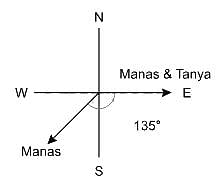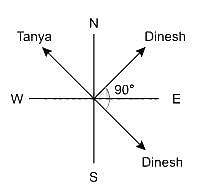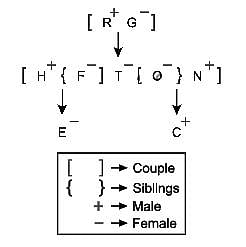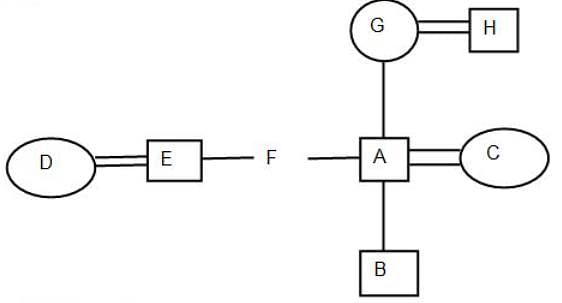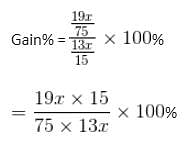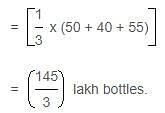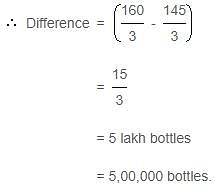Uttarakhand D.El.Ed Mock Test - 10 - UTET MCQ
30 Questions MCQ Test Uttarakhand D.El.Ed Mock Test Series 2024 - Uttarakhand D.El.Ed Mock Test - 10
Which time zone is located to the east of the Prime Meridian?
What is the primary objective of risk assessment and vulnerability mapping in disaster management?
| 1 Crore+ students have signed up on EduRev. Have you? Download the App |
Which colour of heat radiation represents the highest temperature?
Directions: Each of the following consists of a question and two statements numbered I and II given below it. You have to decide whether the data provided in the statements are sufficient to answer the question:
Which direction is Tanya facing?
Statement I: If Manas who is currently facing southwest (at 45° angle), turns 135° anticlockwise, he would face the same direction as Tanya.
Statement II: If Dinesh who is currently facing northeast (at 45° angle) turns 90° clockwise, he would face the direction 180° to the direction Tanya is facing.
Directions: Read the following information carefully and answer the questions given beside.
There are nine members in a family consisting of three generations and having three married couples. N is the father of C and the brother-in-law of T. Neither H nor N has sibling. E is the daughter of the one who is sister-in-law of N. T is the unmarried person in the family. R is the father-in-law of H and the spouse of G who is the maternal grandmother of E. C and E are of opposite gender. F is the sister of T who is the aunt of C who is not child of F. H is the son-in-law of G who is the mother-in-law of the one who is spouse of O.
How C is related to F?
Direction: Read the given instructions carefully and answer the questions given beside-
A = B means A is the Husband of B
A - B means A is the mother of B
A / B means A is the daughter of B
A % B means A is the son of B
A # B means A is the father of B
A @ B means A is the brother of B
A * B means A is the wife of B
A + B means A is the sister of B
If the given instruction ‘’P = Q - R @ S = T - U + V = W’’ is true, then how is W related to S?
Directions: Study the following information carefully to answer the given Questions:
P^Q-P is the child of Q
P!Q-P is the parent of Q
P*Q - P is elder to Q
P#Q-P is younger to Q
P@Q-P is brother of Q
P&Q - P is wife of Q
P+Q-P is sister-in-law of Q
Q. If A!B^C+D&E@F^G!A, if B is the son of C, then how is A related to B?
In the English Alphabet, which letter would be tenth to the right of eighteenth from right?
The following questions is based on the following alphabet-series:
A B C D E F G H I J K L M N O P Q R S T U V W X Y Z
Q.
Which of the following is the twelfth letter to the left of the seventeenth letter from the left end?
A is working and B is the sleeping partner in a business. A invests Rs. 12,000 and B invests Rs. 20,000. A receives 10% of the profit for managing. The rest is divided in the ratio of their capitals. Out of a total profit of Rs. 9600, what will be the amount received by A?
The cost of a diamond varies directly as the square of its weight. Once, this diamond broke into four pieces with weights in the ratio 1 : 2 : 3 : 4. When the pieces were sold, the merchant got Rs. 70,000 less. Find the original price of the diamond.
Of all the articles manufactured by a company, 5% are defective. If the manufacturing cost of 100 articles is Rs. 1900, what should be the market price of the article so that the company gets 40% profit, even if it gives the articles to the distributor for 30% less price than the market price?
Rahul purchased a scooter at 13/15th of its selling price and sold it at 12% more than its selling price. What is his gain percent?
Find curved and total surface area of a conical flask of radius 6 cm and height 8 cm.
In the figure, AB is parallel to CD and RD || SL || TM || AN, and BR : RS : ST : TA = 3 : 5 : 2 : 7. If it is known that CN = 1.333 BR. Find the ratio of BF : FG : GH : HI : IC
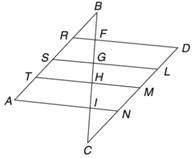
The product of two successive integral multiples of 5 is 1050. Then the numbers are
Direction: A soft drink company prepares drinks of three different flavours - X, Y and Z. The production of three flavours over a period of six years has been expressed in the bar graph provided below. Study the graph and answer the questions based on it.
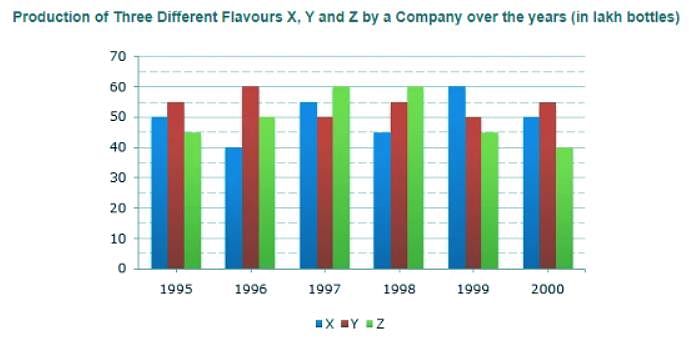
Q. What is the difference between the average production of flavour X in 1995, 1996 and 1997 and the average production of flavour Y in 1998, 1999 and 2000?
John and Dani go for an interview for two vacancies. The probability for the selection of John is 1/3 and whereas the probability for the selection of Dani is 1/5. What is the probability that only one of them is selected?
The style of writing and imaginative capacity of students can be measured through this type of questions.
Rohan is listening to the lecture being delivered. He is able to understand and evaluate what the teacher says. Which type of listening is this ?
Which of the following features are included in the problem-solving method?
I. Achieving the objective.
II. Difficulties/needs that come in the way of achieving the objective.
III. Reach a satisfactory solution to the problem and achieve the objective.
Which of the following are examples of cultural tools that aid and change our functioning as per Lev Vygotsky's theory?
(i) Maps
(ii) Language
(iii) Calculator
(iv) Schemas
For the inclusion of students from religious minorities, a teacher should:


